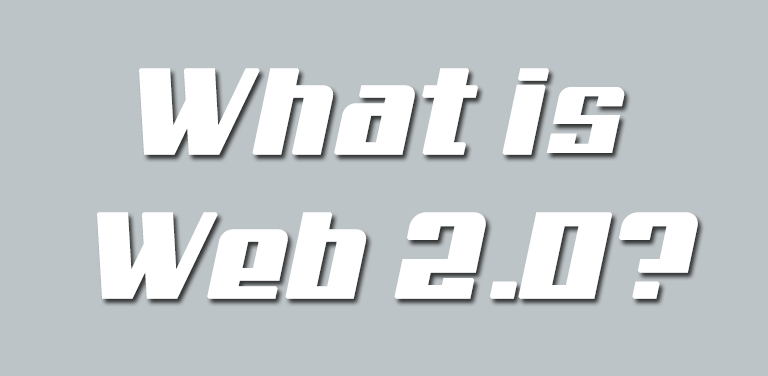
The bursting of the dot-com bubble in 2001 marked a turning point for the web.
The concept of “Web 2.0” began with a conference brainstorming session between O’Reilly and MediaLive International. Dale Dougherty and O’Reilly noted that far from having “crashed”, the web was more important than ever, with exciting new applications and websites popping up with surprising regularity. What’s more, the companies that had survived the collapse seemed to have some things in common. Could it be that the dot-com collapse marked some kind of turning point for the web, such that a call to action such as “Web 2.0” might make sense? It seemed so, hence the Web 2.0 conference was born.
In the years since, the term “Web 2.0” has clearly taken hold, with tens of millions of listings in Google. Even still however, there’s still a huge amount of disagreement about just what Web 2.0 means, with some people decrying it as a meaningless marketing buzzword, and others accepting it as the new conventional wisdom.
“Web 2.0” refers to a perceived second generation of web development and design, that facilitates communication, secure information sharing, interoperability, and collaboration on the World Wide Web. Web 2.0 concepts have led to the development and evolution of web-based communities, hosted services, and applications; such as social-networking sites, video-sharing sites, wikis, blogs, and folksonomies.
Tim Berners-Lee – a professor credited with having created the World Wide Web – has questioned whether one can use the term in any meaningful way, since many of the technological components of Web 2.0 have existed since the early days of the Web.
The sometimes complex and continually evolving technology infrastructure of Web 2.0 includes server-software, content-syndication, messaging-protocols, standards-oriented browsers with plugins and extensions, and various client-applications. The differing, yet complementary approaches of such elements provide Web 2.0 sites with information-storage, creation, and dissemination challenges and capabilities that go beyond what the public formerly expected in the environment of the so-called “Web 1.0”.
As with the private sector, Web 2.0 initiatives are being employed within the public sector, giving more currency to the term Government 2.0. For instance, Web 2.0 websites such as Twitter, YouTube and Facebook have helped in providing a feasible way for citizens to connect with government officials, which was otherwise nearly impossible. Direct interaction of higher government authorities with citizens is replacing the age-old ‘single-sided communication’ with evolved and more public interaction methodologies.
Advocates of “Web 2.0” may regard syndication of site content as a Web 2.0 feature, involving as it does standardised protocols, which permit end-users to make use of a site’s data in another context (such as another website, a browser plugin, or a separate desktop application). Protocols which permit syndication include RSS (Really Simple Syndication — also known as “web syndication”), RDF (as in RSS 1.1), and Atom, all of them XML-based formats. Observers have started to refer to these technologies as “Web feed” as the usability of Web 2.0 evolves and the more user-friendly Feeds icon supplants the RSS icon.
As we have seen, there are a number of technology services that are often posited as representing the
Web 2.0 concept in some way. In recent months, however, there has been an explosion of new ideas,
applications and start-up companies working on ways to extend existing services. Some of these are
likely to become more important than others, and some are certainly more likely to be more relevant to
education than others. There is such a deluge of new services that it is often difficult to keep track of
what’s ‘out there’ or to make sense of what each provides.
Web 2.0 is about the people, when it comes down to it. So it has to be inclusive. All opinions and theories count.




